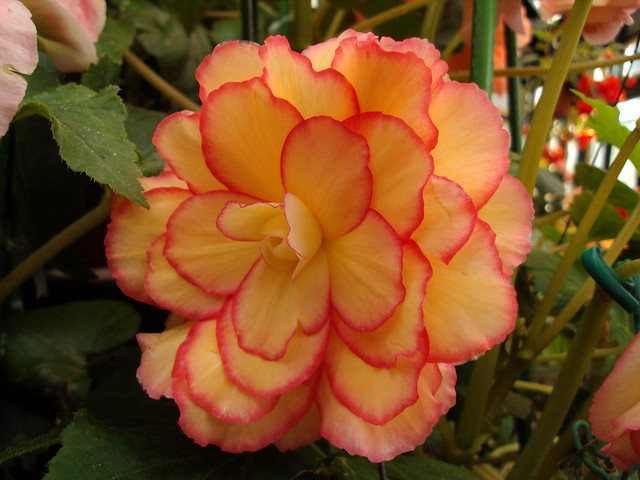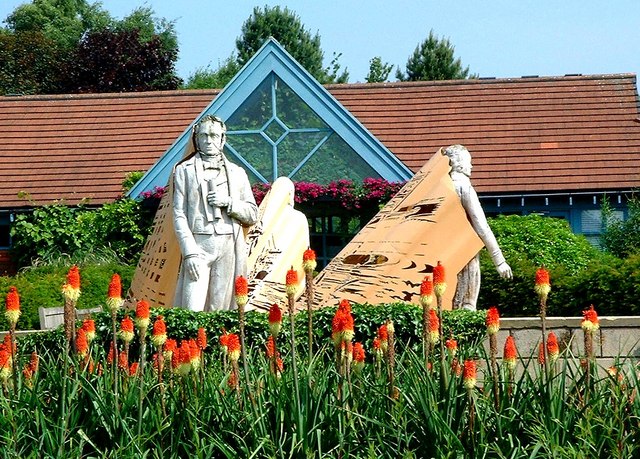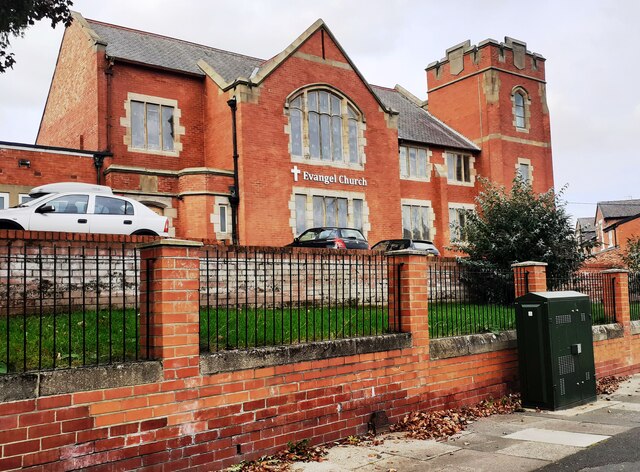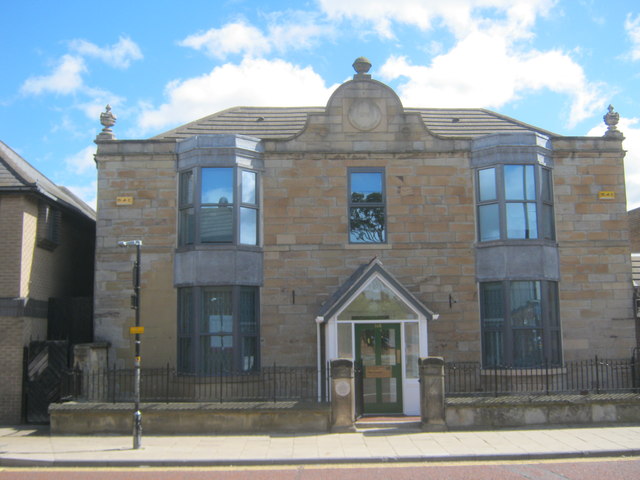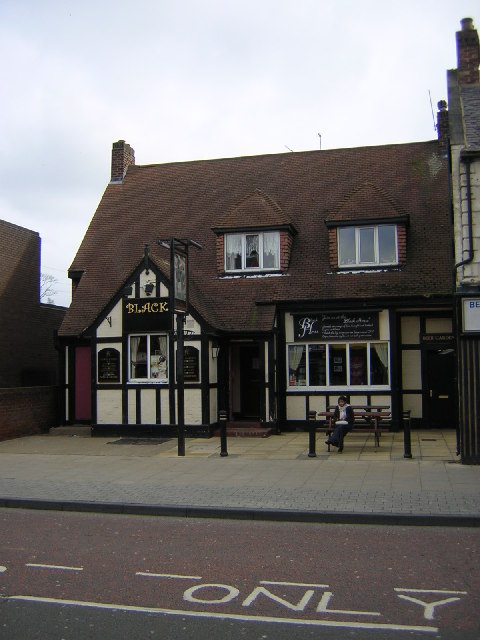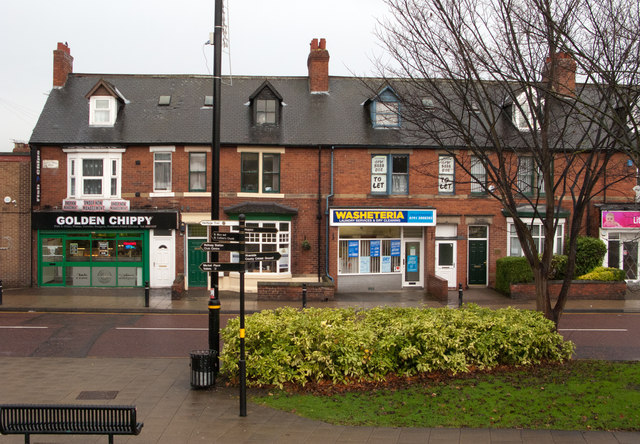Begonia. In Bathurst botanic gardens

-
Description
A Very Brief History of Bathurst. Bathurst is the first inland town of mainland Australia and the first NSW town away from the coastal plains of Sydney. It was established by a decree of Governor Macquarie in 1815. This happened at a time when Macquarie was reluctant to open up areas to settlement and to give more land grants. But the pressures of the British Colonial Office and the rapidly developing British industrial revolution meant new supplies of wool for the Lancashire textile mills were needed. Coupled with this was the desire by freed convicts (emancipists), gentlemen settlers and others to open up the west and make a fortune. Bathurst began as a settlement with strong links to England- it was named after Lord Bathurst, the streets were named after British kings- William and George, and other streets were named after British politicians and colonial office leaders- Howick, Gladstone, Peel, Durham, Keppel and others. The first squatters were Cox, Lawson and Icely but others soon followed. They received “unofficial” land grants in 1815 which were not officially confirmed until 1823 just before Governor Macquarie was ready to leave the colony. As more white people moved into the district the town as the governor set up a depot and barracks in Bathurst. It was a convict town and military barracks. The police were needed to shoot escaped convicts and bushrangers and get the local Aboriginal people under control. The convicts in Australia were seldom incarcerated in prison; they were usually assigned as labourers to pastoralists. So Bathurst was needed to house, police and control convicts and ex-convicts and ticket of leave men (men basically on parole). So the settlement of Bathurst in 1820 consisted on a few free settlers, some wealthy pastoralists, lots of government officials and the town Commandant, and convicts. In fact in 1820 there were 16 free people, 75 convicts and 13 emancipists. The free people were soldiers and their wives. The buildings consisted of Macquarie’s Cottage, the house of the superintendent of convicts, a government store, barracks for soldiers and convicts, and a granary. The focus of town was the police barracks, a site now occupied by the City Bowling Club. In those days it was the Ordinance Ground. The early town was built by convicts and they comprised three quarters of the population. Nothing much remains of the work and effort of the convicts, except for Macquarie’s Bathurst House. After Macquarie left the colony in 1824 and settlement by free people was being encouraged more and more land grants were given. On the river flats land grants were usually 70 to 100 acres, but the large pastoral runs were obtained by land grants too during the 1820s. By 1828 the Bathurst area had over 1,200 people in it, and convicts had fallen to about 55% of all residents. The most convicts arrived in Bathurst during the 1830s, the peak time for transportation to Australia. Transportation ceased in 1850, just before the 1851 gold rushes. But even then convicts still comprised about 30% of the total population. The gold rushes changed that forever. Most of the early free settlers lived in Kelso across the river, whilst the wealthy, government officials and convicts lived in Bathurst. The town saw one of the worst conflicts in Australia between whites and the Wiradjura in 1823/24. The Aboriginal leader, Windradyne (now a suburb of Bathurst) led his people on a series of raids and attacks on sheep for food. The whites retaliated with arsenic in damper (arsenic was sued to control scab in sheep) and shooting parties. Aborigines on Kelso river flats stealing potatoes were shot and killed. In relation shepherds were killed by the Aborigines. Thirteen stockmen were killed in one month. Governor Darling declared martial law for Bathurst for six months in 1824. Government reports said 60 to 70 aborigines were killed during this time, but locals claim it was more like two hundred. Three whites were tried for murder of aboriginal people in 1824 but they were acquitted. The government had a £500 reward on the head of the leader Windradyne. This was not claimed. When he returned to Bathurst in 1829, wounded from conflict with another Aboriginal group it was Dr Busby who dressed his wounds before he died. The street where Ben Chifley lived was named after this government doctor. The early buildings of Bathurst no longer exist. The 19th century town which we can see today mainly dates from the period after the gold rushes (1851), when the town was wealthy and booming in the 1860s and 1870s. Some exceptions are: Macquarie’s Government House (1817); Holy Trinity Anglican Church in Kelso (1835); Kelsoville House in Kelso dating from 1840; the original part of the Methodist church hall (1832); and the original Anglican manse, now Miss Traill’s Cottage ( 1845). So the legacy of convict buildings is gone. The pamphlet on a historical walk around Bathurst available from the Information Centre concentrates on buildings erected between 1860 and 1900. -
Owner
denisbin -
Source
Flickr (Flickr) -
License
What does this mean? Attribution-NoDerivs License
-
Further information
Link: https://www.flickr.com/photos/82134796@N03/11234225013/
Resource type: Image
Added by: Simon Cotterill
Last modified: 8 years, 4 months ago
Viewed: 925 times
Picture Taken: 2010-04-18T10:36:33 -
Co-Curate tags
